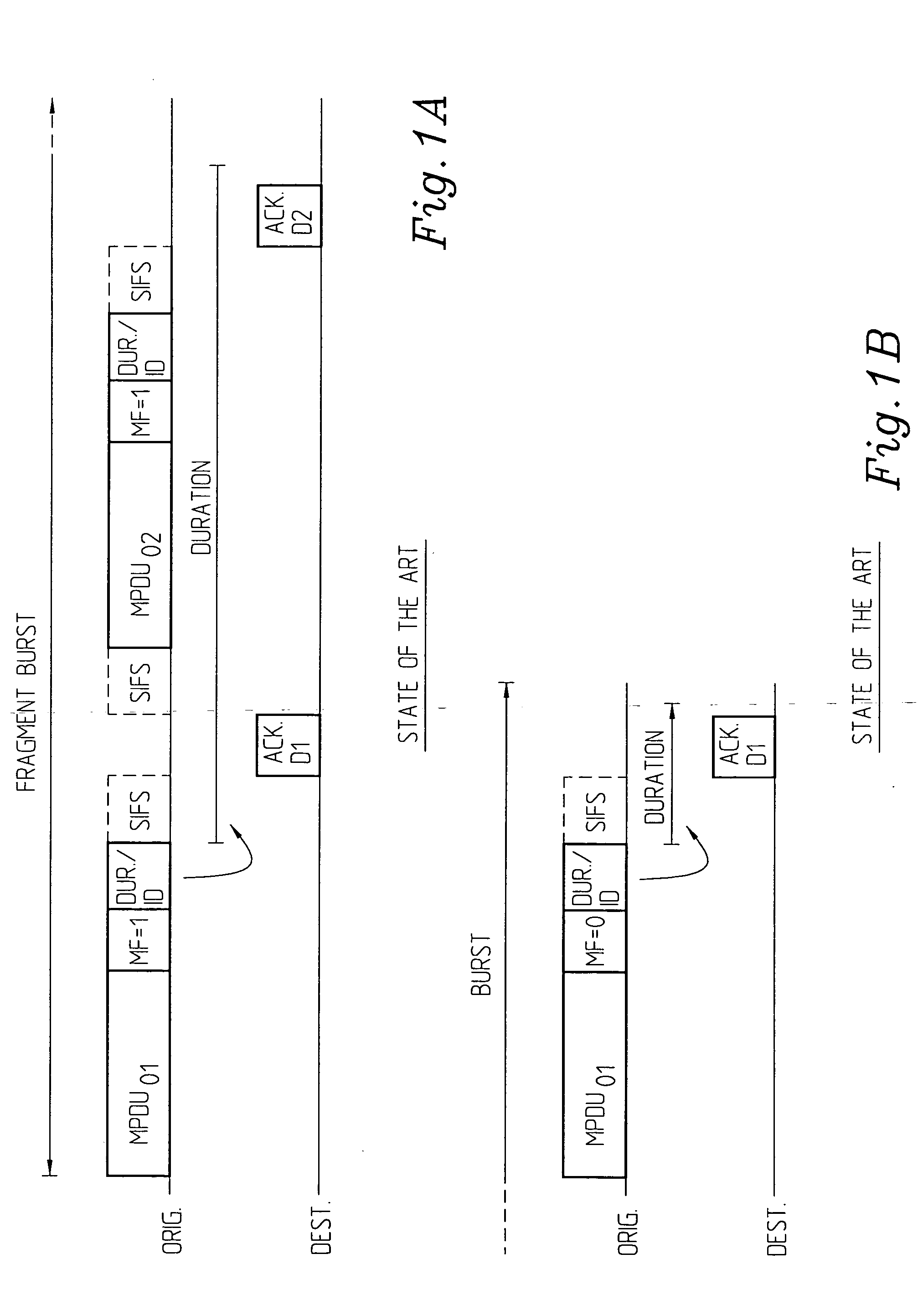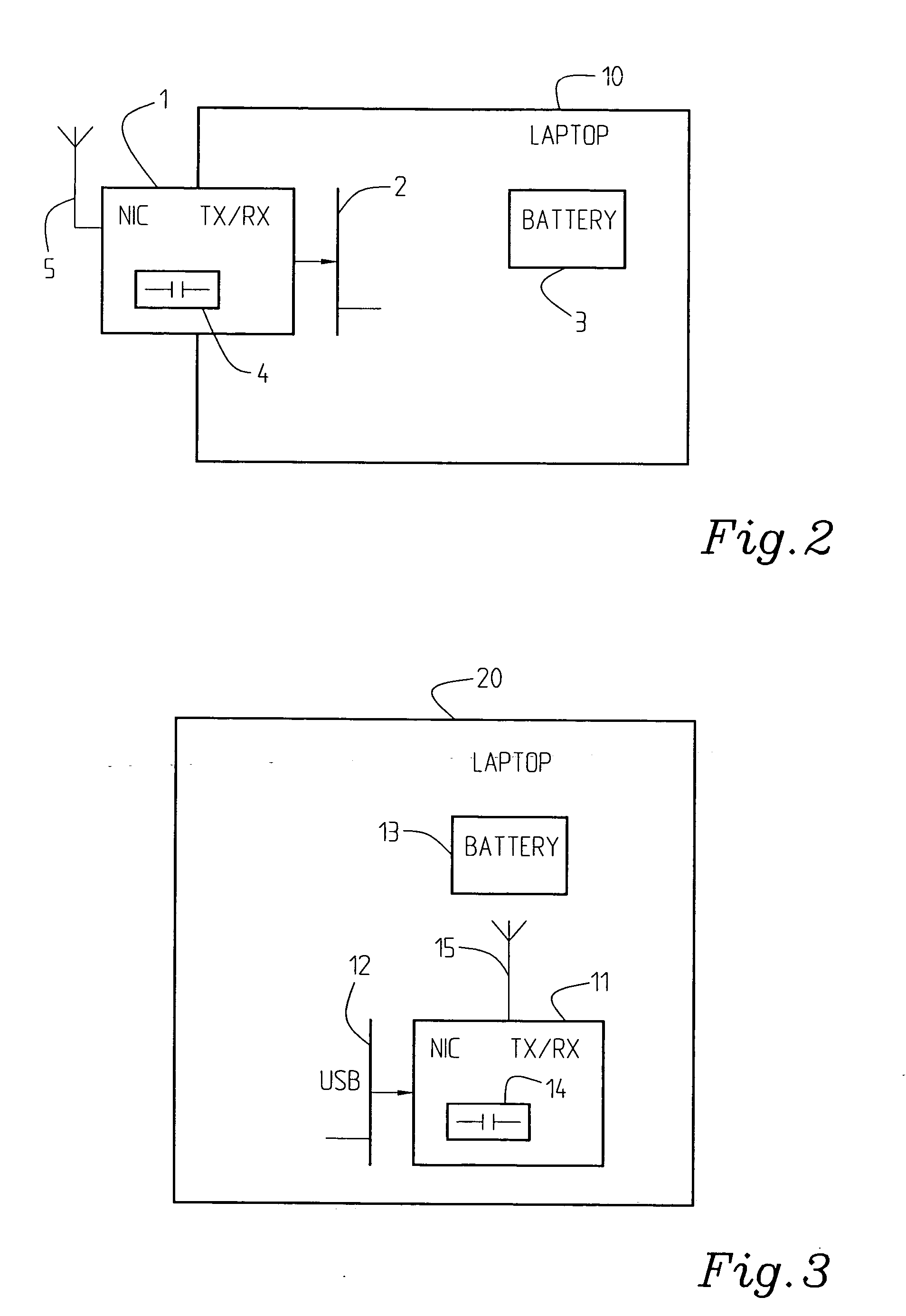Wireless station and a transmission method in a wireless local area network
a wireless local area network and wireless technology, applied in the field of wireless local area networks and lans, can solve the problems of increasing the data throughput of wlan products, requiring a lot of energy, and requiring a higher power consumption, so as to achieve the effect of reducing the power requirements of transmission
- Summary
- Abstract
- Description
- Claims
- Application Information
AI Technical Summary
Benefits of technology
Problems solved by technology
Method used
Image
Examples
Embodiment Construction
[0050] IEEE 802.11 uses, as referred to earlier in the application, so called MAC (Medium Access Control) frames of variable size to transmit data over a Wireless Medium (WM). The maximum size of a frame (MSDU), header and FCS is 2346 octets. In the international standard ANSI / IEEE Std 802.11, First edition 1999 (ISO / IEC 8802-11, Wireless LAN Medium Access Control (MAC) and Physical layer (PHY) specifications, in section 7 the frame formats and particularly the MAC frame formats (section 7.1) are described, as also other frame formats in section 7.2. In the MAC sublayer functional description section 9, particularly sections 9.1, 9.2, access methods are described, as well as the control of the channel in section 9.2.5.5 and fragmentation in section 9.2.5.6. These documents, particularly the sections referred to, are herewith incorporated herein by reference thereto. Draft supplement to Standard for Telecommunications and Information Exchange between Systems—LAN / MAN Specific Requirem...
PUM
 Login to View More
Login to View More Abstract
Description
Claims
Application Information
 Login to View More
Login to View More - R&D
- Intellectual Property
- Life Sciences
- Materials
- Tech Scout
- Unparalleled Data Quality
- Higher Quality Content
- 60% Fewer Hallucinations
Browse by: Latest US Patents, China's latest patents, Technical Efficacy Thesaurus, Application Domain, Technology Topic, Popular Technical Reports.
© 2025 PatSnap. All rights reserved.Legal|Privacy policy|Modern Slavery Act Transparency Statement|Sitemap|About US| Contact US: help@patsnap.com



